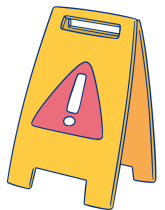Part 1. Legal drug distribution channel

Legal drug distribution channel, from manufacture to use by the patient, with rules to ensure the effectiveness and safety of medicines.
There is no guarantee for medicines outside this distribution channel. This is particularly so for medicines sold illegally on the street, at markets or in unlicensed shops.

Medicines are manufactured by pharmaceutical companies
Before putting their products (medicines) on sale in a country, pharmaceutical companies have to obtain official or legal authorisation. This authorisation confirms the medicine than can be distributed in a country.
Furthermore, for most common and urgent diseases, each country has specific supply terms with manufacturers in agreement with the World Health Organisation (WHO).
Medicines are then sent to the places where they will be dispensed
At the hospital, health centre or pharmacy, the pharmacist or healthcare staff are responsible for dispensing the medicines prescribed by the healthcare workers.
In some areas where these facilities are underdeveloped, medicines may unusually be dispensed by traders, provided that they have received OFFICIAL AUTHORISATION. These places are usually called “MEDICAL DEPOTS” and are authorised to only sell medicines on the official list assigned to them. They must be regularly checked by pharmacists

Street medicines, beware, danger !
Many vendors obtain medicines illegally to resell them on the street, in unlicensed shops, on market stalls or via itinerant traders. However, medicines are unlike other products. To ensure their effectiveness and patients’ safety, distribution and dispensing of medicines must follow very precise rules that only healthcare workers are able to apply.
Hence, what are known as falsified medicines can be found in street markets.
What are falsified medicines? ?
According to the WHO, a counterfeit or falsified medicine is one which is deliberately and fraudulently mislabelled and does not show its real identity and/or source.
It can be a brand or generic product. Some falsified medicines may contain active ingredients, but in insufficient quantities. Others contain no active ingredients or may contain the wrong ingredients that are dangerous to health.
We are actually talking about “falsified medicines”. This term is more extensive than “counterfeit” and it also includes substandard medicines, or genuine medicines that may have been trafficked by smugglers in poor conditions (in the sun and heat for example), damaging the product's effectiveness and safety
.